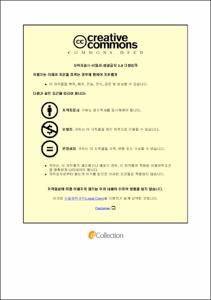중등도 이상 석회화 관상동맥 중재술에서 혈관내 초음파의 임상적 의의
- Abstract
- Background Calcified coronary lesion is a challenging subset in percutaneous coronary intervention (PCI). However, the clinical impact of intravascular ultrasound (IVUS) guidance PCI in calcified lesion was not evaluated.
OBJECTIVE To compare 3-year efficacy and safety outcomes after IVUS-guidance PCI versus angiography-guidance PCI for angiographically moderate to severe calcified plaque lesion.
METHODS In this observational cohort of the IRIS-DES registry, we evaluated 2,645 patients (1,105 IVUS-guided and 1,540 angio-guided patients) with angiographically moderate to severe calcified lesion between April 2008 and December 2017. Angiographically moderate calcified lesion was defined as radiopacities noted only during the cardiac cycle before contrast injection, whereas severe calcification was defined as radiopacities seen without cardiac motion. The primary outcome was a composite of cardiac death, target-vessel myocardial infarction (MI), or target-vessel revascularization (TVR). Adjusted outcomes were compared with the use of propensity scores and inverse-probability-weighting adjustment (IPTW).
RESULTS At 3-year, the adjusted rate of the primary outcome was significantly lower in patients underwent IVUS-guided PCI than angiography-guided PCI (8.4% vs. 13.1%, adjusted hazard ratio [HR] 0.65; 95% confidence interval [CI], 0.49-0.87, P=0.004). And the adjusted 3-year cardiac mortality rate was significantly lower in patients underwent IVUS-guided PCI (2.9% vs. 6.0%, adjusted HR 0.50, 95% CI, 0.31-0.79, P=0.003), whereas the 3-year rate of target-vessel MI (0.9% vs. 1.6%, adjusted HR 0.73, 95% CI 0.32-1.65, P=0.449) and TVR (4.9% vs 6.8%, adjusted HR 0.76, 95% CI 0.51-1.11, P=0.156) were similar between IVUS-guided PCI and angiography-guided PCI.
CONCLUSION In PCI for calcified lesion, IVUS-guided PCI was associated with a lower risk of the primary composite of cardiac death, target vessel MI, or TVR when compared with angiography-guided PCI.
|배경: 관상동맥 중재술에서 석회화 병변은 여전히 어려운 병변이다. 그러나 석회화 병변에서 혈관내 초음파 유도하 경피적 관상동맥 중재술이 임상적 경과에 미치는 영향은 잘 알려지지 않았다.
목적: 심혈관 조영상 중등도 이상의 석회화 병변에서 혈관내 초음파 유도하 경피적 관상동맥 중재술과 혈관 조영상 유도하 경피적 관상동맥 중재술의 3년의 임상적 경과를 비교하려고 한다.
방법: 2008년 4월부터 2017년 12월까지 심혈관 조영상 중등도 이상의 석회화 병변에 경피적 관상동맥 중재술을 시행 받은 2,645 명 중, 혈관내 초음파 유도하 시술을 받은 1,105명의 환자와 혈관조영상만을 이용하여 시술을 받은 1,540 명의 환자를 비교하였다. 3년 복합 임상 성적(심인성 사망, 표적 혈관 심근경색, 표적 혈관 재시술의 합), 심인성 사망, 표적혈관 심근경색, 표적혈관 재시술, 표적 병변 재시술 및 스텐트 혈전증을 역확률 가중치 교정 (inverse probability weighting adjustment) 및 성향 점수 매칭 (propensity score matching)을 이용하여 비교하였다.
결과: 전체 코호트에서 3년 복합 임상 성적은 혈관내 초음파 유도하 시술을 받은 환자군은 혈관조영상만을 이용한 환자군보다 유의하게 낮은 임상 성적을 보였다 (위험비 0.65, 95% 신뢰 구간 0.50-0.85, P=0.002). 이는 역확률 가중치 교정 비교시에도 일치하는 결과를 보였다 (보정된 위험비 0.65, 95%신뢰 구간 0.49-0.87, P=0.004). 그리고 보정된 3년째 심인성 사망률도 유의하게 혈관내 초음파 유도하 시술을 받은 군이 낮았다 (보정된 위험비 0.50, 95%신뢰 구간 0.31-0.79, P=0.003). 그러나 3년째 표적혈관 심근경색 발생률 (보정된 위험비 0.73, 95%신뢰 구간 0.32-1.65, P=0.449), 3년째 표적혈관 재시술 발생률 (보정된 위험비 0.76, 95% 신뢰 구간 0.51-1.11, P=0.156)은 두 군 간에 유의한 차이가 없었다.
결론: 석회화 병변에 대한 경피적 관상동맥 중재술 중 혈관내 초음파 사용은 혈관조영상만 이용한 환자군에 비해 3년째 심인성 사망, 표적혈관 심근경색과 표적혈관 재시술의 복합 임상 사건의 발생을 유의하게 낮추는 것과 연관이 있었다.
- Issued Date
- 2021
- Awarded Date
- 2021-08
- Type
- Dissertation
- Keyword
- 석회화 병변; 혈관내 초음파; 경피적 관상동맥 중재술
- Alternative Author(s)
- Hanbit Park
- Affiliation
- 울산대학교
- Department
- 일반대학원 의학과
- Advisor
- 박덕우
- Degree
- Doctor
- Publisher
- 울산대학교 일반대학원 의학과
- Language
- eng
- Rights
- 울산대학교 논문은 저작권에 의해 보호받습니다.
- Appears in Collections:
- Medicine > 2. Theses (Ph.D)
- 파일 목록
-
-
Download
 200000505025.pdf
기타 데이터 / 830.21 kB / Adobe PDF
200000505025.pdf
기타 데이터 / 830.21 kB / Adobe PDF
-
Items in Repository are protected by copyright, with all rights reserved, unless otherwise indicated.